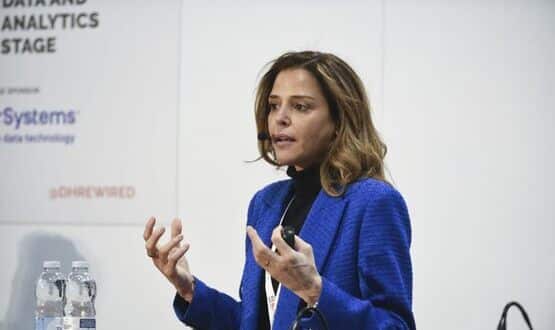Digital advancements in community nursing empower patients
- 13 March 2024

The integration of digital technologies in community nursing has become a pivotal part of patient care and accessibility to medical information, speakers told an audience Tuesday at the Digital Health Rewired24 session ‘Community nursing – nursing in the digital age’, Kardelen Yuce reports.
The audience at the Digital Nursing and Midwifery Summit hear insights about the impact of digitisation on nursing practices, highlighting its transformative potential within the healthcare landscape.
Rachel Viggars, strategic nurse lead at Staffordshire Training Hub, emphasised how digital advancements have empowered patients by granting them access to crucial information previously obtained through traditional means such as reception calls. This shift towards digital communication has not only enhanced convenience for patients but has also streamlined administrative processes, saving valuable time for both healthcare providers and individuals seeking medical assistance.
She said: “The workload is huge, but the app has enabled patients to have access to information, which they would have normally rung reception for. So, it has cut down on some of those long waits and telephone queues, because they can access their test results, they can check up on referrals and they can look back at their last consultation,.
“We know that when patients are in consultation, whether that’s virtual consultation or face to face, they don’t retain everything that you tell them, so to be able to actually just look back and see what’s been documented is a real step forward, and it really means that it saved those duplicate appointments.”
Dr. Agnes Fanning echoed this sentiment, emphasising the efficiency and time-saving benefits brought about by remote healthcare services. By leveraging digital platforms, patients can now receive consultations and medical guidance without the need for physical visits to healthcare facilities, significantly improving accessibility to healthcare services.
Ynez Symonds, CNIO at Solent Community NHS Trust, highlighted innovative solutions developed by her team, which include an automated visit scheduler and a patient portal for self-management of treatments. Additionally, the adoption of virtual ward setups has proven to be a significant advancement in patient care delivery.
Symonds emphasised the importance of acknowledging that digital solutions may not be suitable for all patients and situations. While digital tools offer numerous benefits, including improved access to information and streamlined processes, it is important to recognise that face-to-face interactions remain indispensable for certain aspects of patient care, she said.
“What’s been great is that we’re able to feedback into the system to say where things worked really well, but also where digital was not the right solution, and that’s really importantly to recognise,” she added. “For some of our patients, this isn’t the best thing for them, but actually what we can do is put mechanisms in place to be able to streamline other efficiencies, so, when we need to, we are still able to deliver face-to-face, hands on care,” said Symonds.
Moreover, contrary to common misconceptions, the elderly population has demonstrated an aptitude for utilising digital technologies, emphasising the importance of inclusivity and accessibility in digital healthcare initiatives.
The integration of digital innovations within nursing practice holds immense promise for enhancing patient care and operational efficiency. By embracing digital solutions while remaining mindful of individual patient needs, healthcare providers can navigate the evolving healthcare landscape with confidence, ultimately delivering more accessible, efficient, and patient-centered care.




